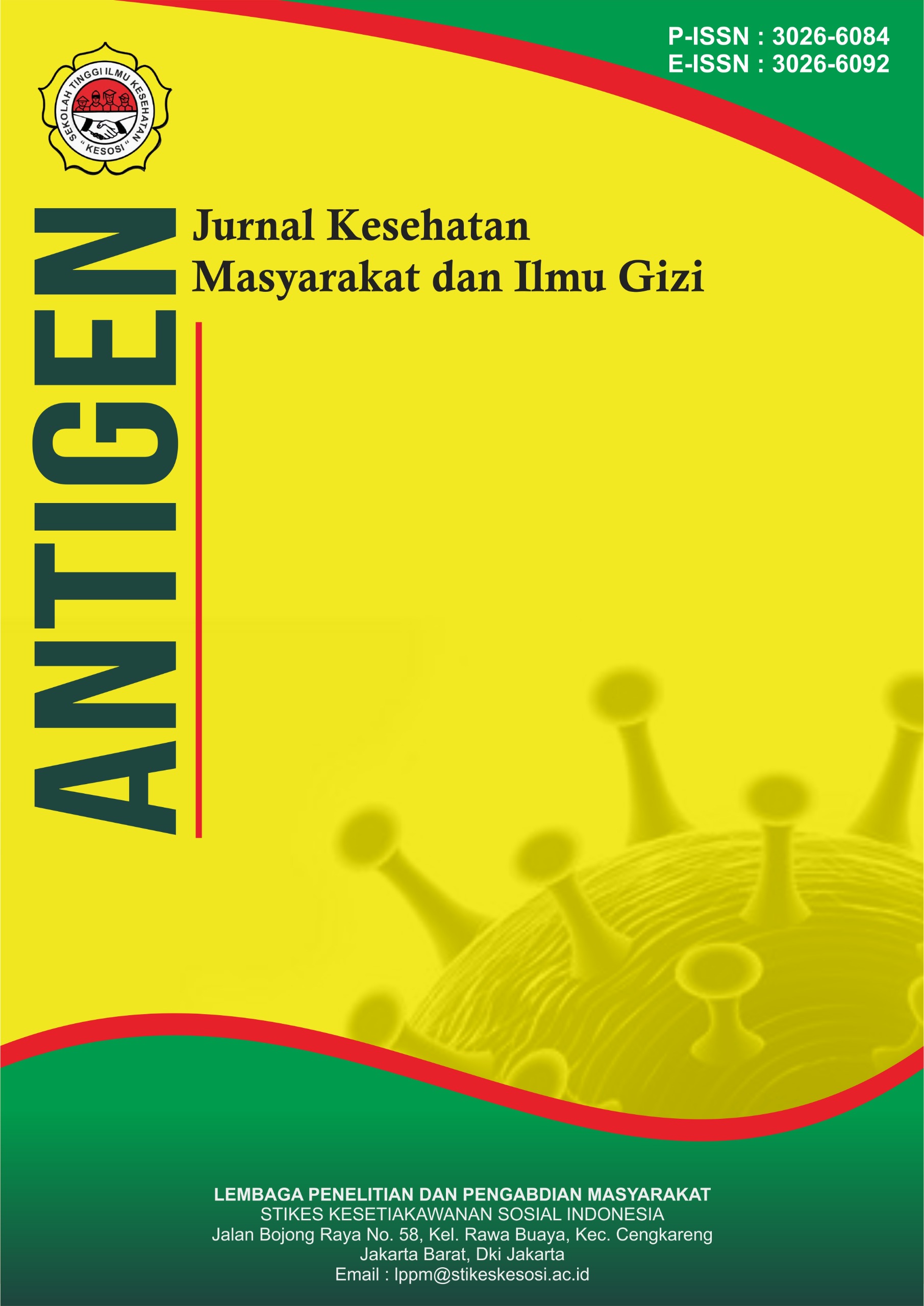Kejadian Stunting terhadap Pola Pemberian Makan pada Balita Usia 12-59 Bulan di Wilayah Kerja Puskesmas Lobu, Kabupaten Banggai
DOI:
https://doi.org/10.57213/antigen.v3i1.504Keywords:
Feeding, Patterns, StuntingAbstract
Stunting is a form of malnutrition characterized by height-for-age indicators. The height-for-age (H/A) indicator reflects chronic nutritional issues resulting from prolonged adverse conditions. The aim of this study is to identify the factors influencing the incidence of stunting in children aged 12–59 months in the working area of the Lobu Health Center, Banggai Regency. This research employs a quantitative approach with a cross-sectional study design. The population in this study consists of mothers with stunted children. A total of 85 respondents were selected as the sample using a total sampling technique. The independent variables in this study are maternal education level, family income, and feeding practices. The dependent variable is stunting. Data collection was conducted using questionnaires, and children's height was measured with a microtoise and converted into standard z-scores. The results indicate a significant effect of feeding practices on the incidence of stunting in children aged 12-59 months (p=0.002; r=0.326). Improved feeding practices are associated with a reduction in stunting rates in the working area of the Lobu Health Center, Banggai Regency, emphasizing the need to enhance feeding practices. Therefore, nurses and other healthcare professionals should intensify health promotion efforts regarding proper feeding practices for young children.
References
Kementerian Kesehatan Republik Indonesia. (2020). Pedoman pencegahan dan penanganan stunting. Jakarta: Kementerian Kesehatan RI.
Lemaking, V. B., Manimalai, M., & Djogo, H. M. A. (2022). Pengaruh pekerjaan ayah, pendidikan ibu, pola asuh, dan jumlah anggota keluarga dengan kejadian stunting pada balita di Kecamatan Kupang Tengah, Kabupaten Kupang. Ilmu Gizi Indonesia, 5(2), 123–132.
Priyanti, S., & Syalfina, A. D. (2018). Determinan sosial terhadap kejadian stunting pada anak usia di bawah lima tahun. Jurnal Kebidanan, 7(2), 95–102.
Priyono, D. I. P., Sulistiyani, S., & Ratnawati, L. Y. (2015). Determinan kejadian stunting pada anak balita usia 12-36 bulan di wilayah kerja Puskesmas Randuagung Kabupaten Lumajang. Pustaka Kesehatan, 3(2), 349–355.
Sugiyono. (2013). Metode penelitian kuantitatif, kualitatif dan R&D (Edisi 13). Bandung: Alfabeta.
Sugiyono. (2013). Metode penelitian kuantitatif, kualitatif dan R&D (Edisi 13). Bandung: Alfabeta.
Suhardjo. (2009). Perencanaan pangan dan gizi. Jakarta: Bumi Aksara.
Suhardjo. (2023). Perencanaan pangan dan gizi. Jakarta: Bumi Aksara.
Wardani, I. M. K., Nurrochmah, S., & Mawarni, D. (2022). Faktor maternal sebagai determinan stunting di kawasan timur Indonesia: Analisis data Indonesian Family Life Survey 5. Jurnal Penelitian Kesehatan Suara Forikes, 13(1), 229–233.
World Health Organization (WHO). (2005). WHO child growth standards: Length/height-for-age, weight-for-age, weight-for-length, weight-for-height and body mass index-for-age: Methods and development. Geneva: World Health Organization.
Downloads
Published
Issue
Section
License
Copyright (c) 2024 Antigen : Jurnal Kesehatan Masyarakat dan Ilmu Gizi

This work is licensed under a Creative Commons Attribution-ShareAlike 4.0 International License.






